According provided by lens YONGNUO 50mm 1: 1.8 (YN50mm F1.8N, for Nikon cameras) many thanks to Oleg Redkach.
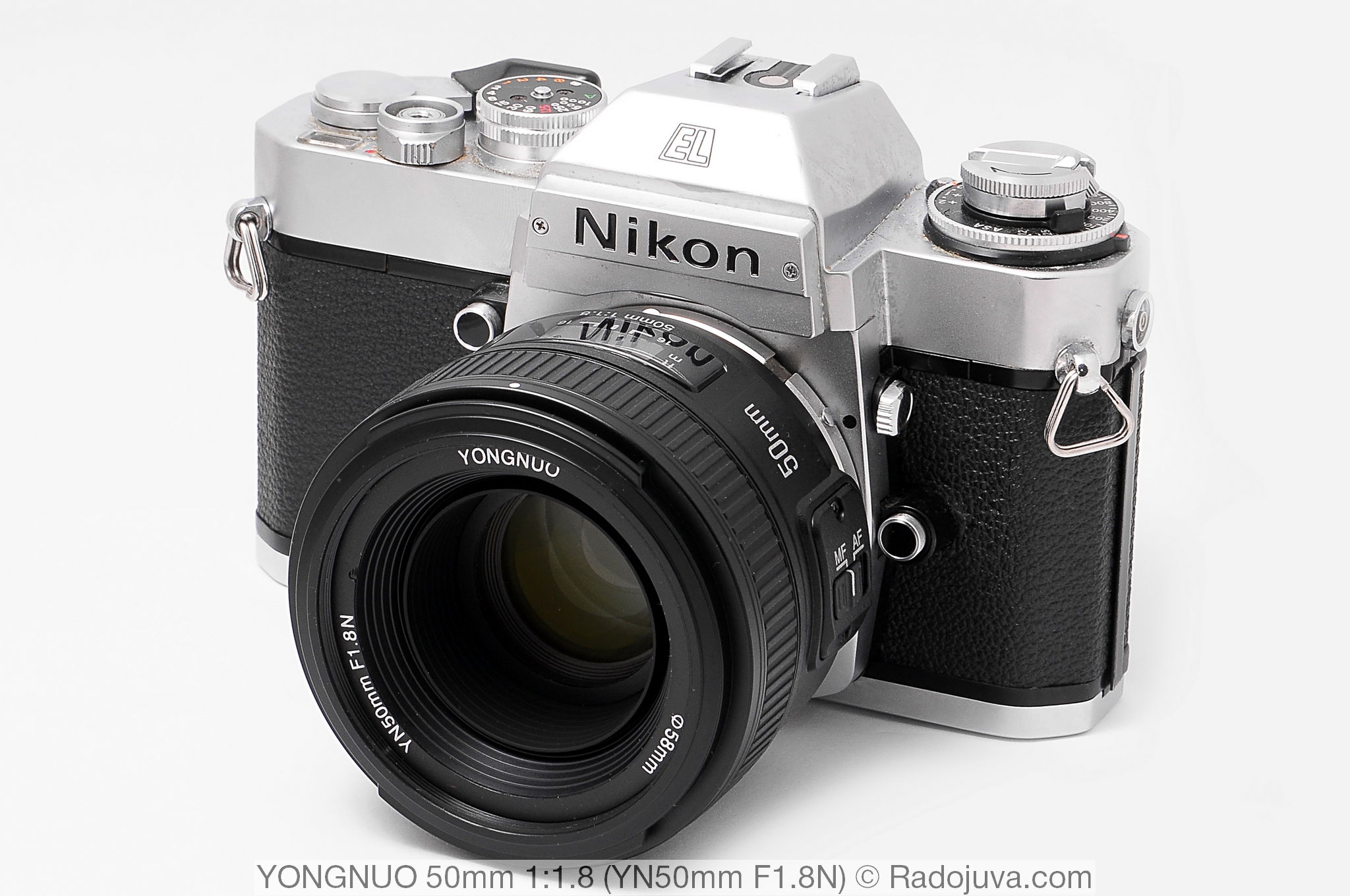
YONGNUO 50mm 1: 1.8 (YN50mm F1.8N). The lens is shown in film slr camera Nikon EL2. Enlarge Image.
Navigation
- Browse Navigation
- In short
- History
- All lenses and teleconverters Yongnuo
- Main Specifications
- Assembly
- Focusing
- Image quality
- Sample photos on Nikon D70
- Sample photos on Nikon D90
- Lens prices
- My experience
- Similar lenses from Nikon
- Differences from Nikon 50 / 1.8G
- Differences from Nikon 50 / 1.8D
- Video review
- Results
- User Comments
- Add your review or question on the lens
It's important: Please note that the models of the Yongnuo YN50mm F1.8 lens, in versions for Nikon and Canon, look very different from each other. Typically, third-party lenses, such as Tokina, Tamron, Sigma, Carl Zeiss, etc., have a very similar housing design for versions for different systems.
In short
Yongnuo 50mm 1: 1.8 (YN50mm F1.8N) - very cheap fast half a ruble from the Chinese manufacturer Yongnuo Digital. The lens copied the original housing design Nikon 50 / 1.8G and optical properties Yongnuo Lens EF 50mm 1: 1.8. In general, he is not bad... First of all, Yongnuo YN50mm F1.8N is interesting to owners motorless Nikon cameras... For those who have a Nikon camera with a built-in focus motor, there is a wonderful and inexpensive Nikon 50 / 1.8D (as well as a million of its subversions).
The creative and practical potential of such a fifty dollars is difficult to overestimate. It is suitable for a wide range of photo tasks. Photo enthusiasts often use it as a portrait lens. Many just want a fast fix, in addition to their whale lens. So, f / 1.8 aperture more than three feet wider aperture of f / 5.6, which is used in 'dark' kit lenses at the long end. In numerical terms, this means that Yongnuo 50mm 1: 1.8 (YN50mm F1.8N) is approximately 10 times brighterthan, for example, whale Nikon 18-55 / 3.5-5.6which uses a maximum relative aperture of only 50: 1 over a 5.6 mm focal length. The calculation of the difference in the relative aperture (count the aperture) is performed elementarily: 5.6 * 5.6: 1.8: 1.8 = 9.679, which is rounded to the value '10'.
History
The first lens from Yongnuo Digital is fifty dollars for Canon EOS cameras - Yongnuo Lens EF 50mm 1: 1.8 (YN50mm F1.8) introduced December 27, 2014.
July 10, 2015 in Shanghai was represented version Yongnuo AF-S 50mm 1: 1.8 (AF-S 50mm 1.8, for Nikon cameras). The lens was labeled 'AF-S' and the depth of field was F / 22. Near the thread for the light filter was the inscription 'YONGNUO AF-S 50mm 1.8', near the depth of field scale was the inscription 'AF-S 50mm 1: 1.8'.
On May 7, 2016, the 'YONGNUO Ø58mm YN50mm F1.8' lens went on sale (without the 'AF-S' lettering, without the 'N' lettering and with the depth of field scale for f / 16). Most likely Yongnuo AF-S 50mm 1: 1.8 was just a prototype, its optical design and type of focusing motor will remain unknown.
Some time later, the letter 'N' was added to the lens name - YONGNUO Ø58mm YN50mm F1.8N... 'N' is short for 'Nikon ', after which the lens took the form shown in this review.
On May 14, 2018, an updated version for Canon cameras was presented - Yongnuo Lens 50mm 1: 1.8 II (model YN50mm F1.8II). After 2 weeks, on May 30, 2018, a faster version for Canon cameras was announced - Yongnuo Lens 50mm 1: 1.4 (model YN50mm F1.4). August 18, 2018 was introduced YONGNUO YN50mm F1.4N E.
All Yongnuo Lenses
Bayonet mount Sony FE [DF, FULL FRAME] и Sony E[DA,APS-C]:
- yongnuo 11 mm 1:1.8 DA DSM WL S [announcement]
- yongnuo 16 mm 1:1.8 DA DSM S [announcement]
- yongnuo 35 mm 1: 2 DF DSM S [review]
- yongnuo 50 mm 1: 1.8 DF DSM S [announce]
- yongnuo 50 mm 1:1.8 DA DSM S [overview]
- yongnuo 85 mm 1: 1.8 DF DSM S [review]
- yongnuo 85 mm 1:1.8 DF DSM S II [announcement]
Bayonet mount Canon RF (mirrorless full frame):
- yongnuo 35 mm 1: 2 DF DSM R [review]
- yongnuo 35 mm 1:2 CR [announcement]
- yongnuo 50 mm 1:1.8 DF DSM R [to be announced]
- yongnuo 85 mm 1:1.8 DF DSM R (two subversions with different names) [review]
Bayonet mount Nikon Z [DF, FULL FRAME + DA,APS-C]::
- yongnuo 11 mm 1:1.8 DA DSM WL Z [announcement]
- yongnuo 35 mm 1:2 DF DSM Z [announcement]
- yongnuo 50 mm 1:1.8 DF DSM Z [announcement]
- yongnuo 50 mm 1:1.8 DA DSM Z [review]
- yongnuo 85 mm 1:1.8 DF DSM Z [announcement]
Bayonet mount fujifilm x [DA,APS-C]:
- yongnuo 11 mm 1:1.8 DA DSM WL X [announcement]
- yongnuo 50 mm 1:1.8 DA DSM X Pro [Announcement]
- yongnuo 50 mm 1:1.8 DA DSM X [announcement + overview]
For the system Micro 4 / 3:
- yongnuo 25 mm 1: 1.7 [review]
- yongnuo 42.5 mm 1: 1.7 [review]
- yongnuo 42.5 mm 1:1.7 II [overview]
- yongnuo 12-35 mm 1:2.8-4 STM ASPH MACRO [announcement]
Bayonet mount Nikon f (mirrored full frame):
- yongnuo 14 mm 1: 2.8 [overview]
- yongnuo 35 mm 1: 2 [overview]
- yongnuo 40 mm 1: 2.8 [overview]
- yongnuo 50 mm 1: 1.8 [review]
- yongnuo 50 mm 1: 1.4 E [overview]
- yongnuo 60 mm 1:2 MACRO MF [overview]
- yongnuo 85 mm 1: 1.8 [overview]
- yongnuo 100 mm 1: 2 [overview]
Bayonet mount Canon EF (mirrored full frame):
- yongnuo 14 mm 1:2.8 [review N]
- yongnuo 35 mm 1: 2 [review]
- yongnuo 35 mm 1: 1.4 [overview]
- yongnuo 35 mm 1: 1.4C DF UWM [announce]
- yongnuo 50 mm 1: 1.8 [overview]
- yongnuo 50 mm 1:1.8 II [overview]
- yongnuo 50 mm 1: 1.4 [overview]
- yongnuo 60 mm 1:2 MACRO MF [review N]
- yongnuo 85 mm 1: 1.8 [review]
- yongnuo 100 mm 1: 2 [overview]
Cameras:
- Yongnuo YN433 (2023, Micro 4/3, 20 MP, 4K)
- Yongnuo YN455 (2021, Micro 4/3, 20 MP, 4K)
- Yongnuo YN450/450M (2019, Micro 4/3 -> Canon EF, 16 MP, 4K)
Lenses and cameras and many other products from Yongnuo can easily be found at Authorized Yongnuo Dealer / Store on Aliexpres.
My video on all Yongnuo lenses here.
Yongnuo Digital lenses replicate the optical design of older Canon EOS lenses. Usually, a version for Canon comes out first, and after a while for Nikon. For other popular SLR systems (Pentax, Sony, Sigma, Micro 4/3), Yongnuo does not produce lenses. And Yongnuo Digital teleconverters exist, at the moment, and at all only for Canon EOS cameras.
Main technical characteristics of YONGNUO 50mm 1: 1.8 (YN50mm F1.8N):
| Review Instance Name | Near the front lens: YONGNUO Ø58mm YN50mm F1.8N. On the case: 50mm 1: 1.8 SN0011346. On the box: YONGNUO DIGITAL YN50mm F1.8N standart prime lens |
| Basic properties |
|
| Front Filter Diameter | 58 mm, plastic thread for filters |
| Focal length | 50 mm, EGF for Nikon DX cameras is 75 mm |
| Zoom ratio | 1 X (this is a fixed lens, it does not have a zoom) |
| Designed by | for full and cropped Nikon digital cameras |
| Number of aperture blades | 7 rounded petals |
| Tags | focusing distance in meters and feet, depth of field for F / 16, mark of bayonet mount and hood mount |
| Diaphragm | from F / 1.8 to F / 16, without aperture ring, lens analog Nikon G. |
| MDF | 0.45 m, maximum magnification ratio 1: 6.7 |
| The weight | 203 g
(since about 2018, the weight of some lenses is 177 grams) |
| Optical design | 6 elements in 5 groups. The lens does not use special optical elements in its optical design.
The optical design is identical to the lens. YONGNUO LENS EF 50mm 1: 1.8. Also, a similar optical scheme is used by lenses:
Optical design like a double lens of Gaus (i.e. this is Planar). |
| Lens hood | Plastic, bayonet type. The model is unknown. It can be supplied. |
| Manufacturer country | The country of manufacture is not indicated on the lens case. But, in fact, the lens is made in China. |
| Period | Available May 7, 2016. Prototype shown July 10, 2015. |
| Instructions | View my scan (English only) |
| Price | View on Aliexpress from a trusted seller |
For some reason, on the network, I met very little information directly about the fifty dollars from Yongnuo for Nikon cameras, because in this review I tried to add as much useful information as possible on the YN50mm F1.8N.
Assembly
The lens came to me for review almost new. Before sending it for review, the owner used it for only a few days.
In a small box is a warranty card, instructions in Chinese and English, and the lens itself with a front (YN-58) and a back cover. The box is made in the colors typical of the golden boxes of Nikon Nikkor lenses. What the copy from this review did not have was a protective film on the front and rear lenses, which originally comes with the lens.
The lens is well assembled. It's nice that, unlike the version Yongnuo Lens EF 50mm 1: 1.8The Yongnuo YN50mm F1.8N version has a metal mount mount. The focus ring is rubberized. It is stated that the contacts of the microcircuits are gold-plated to improve the passage of current.
Of the shortcomings I want to highlight:
- The focus ring has a slight backlash.
- If you press the diaphragm lead (the tab for controlling the diaphragm) from the bayonet side, it will be noticeable that the aperture blades not only close / open but also move back and forth towards the front or rear lens. In other lenses, I did not observe such a looseness of the aperture mechanism. I can’t tell how critical this behavior of the diaphragm mechanism is. During real photography, I did not have any problems with the aperture. True, there are rumors in the network that the diaphragm mechanism is a weak link in this lens.
- Yongnuo YN50mm F1.8N weighs 20 grams heavier than the original Nikon 50 / 1.8G, from which the case design was copied (185 vs 203 grams). However, in my hands I got another new Yongnuo YN50mm F1.8N, made at the end of 2018 and its weight is 177 grams.
- Also, it's a pity that I didn't find a hood in the package. At the same time, some Yongnuo YN50mm F1.8N lenses come with a plastic bayonet type hood. It is not known why not all YN50mm F1.8N lenses are equipped with a hood.
- Several times during high-speed continuous shooting, the camera lost contact with the lens. To restore performance, it was necessary to disconnect the lens and reinstall it on the camera. This situation occurred several times on different cameras, which indicates a problem with the lens, not the camera.
- Unlike Nikon 50 / 1.8GThe Yongnuo YN50mm F1.8N is not dust- and waterproof rubber lens mount seal.
- There is no inscription about the country of manufacture on the lens case. Of course, we all know very well that the lens is made in China, but still the lack of information on the product itself only adds to the alarm.
The diameter of the front filter is 58 mm, the same diameter uses Nikon 50 / 1.8G and many other lenses.
I want to note that the Yongnuo YN50mm F1.8N (for Nikon cameras) is better made than Yongnuo Lens EF 50mm 1: 1.8 (for Canon cameras). Unlike the version for Canon cameras, it uses a metal lens mount, virtually internal focusing, has a window with a focusing distance, the depth of field scale, a more elaborate AF / MF switch and can use a bayonet type hood.
UPDATE 1: With some cameras and some instances of the Yongnuo YN50mm F1.8N, the access to the memory card indicator blinks when turned off. Most likely the camera constantly 'disconnects / connects' the lens. The exact cause is unknown.
UPDATE 2: With some cameras, the battery power decreases when turned off.
Focusing
The lens has built-in focus motor DC-type (DDirectly Current Motor- ordinary DC motor). To be precise, the Yongnuo YN50mm F1.8N is an analog of the Nikon series lenses AF-I. Unlike lenses Nikon AF-Sthat use ultrasonic focusing motors Nikon SWMold lenses Nikon AF-I use a built-in buzzing micro focus motor similar to the Yongnuo DC.
The lens will automatically focus on all Nikon DSLR cameraseven on amateur series models Nikon DXthat do not have a built-in focus motor: D40, D40x, D60, D3000, D3100, D3200, D3300, D3400, D3500, D5000, D5100, D5200, D5300, D5500, D5600as well as mirrorless cameras Nikon Z with adapter FTZ / FTZ II.
When focusing the motor is noisy. Strange, but the noise level is much lower than the lens Yongnuo Lens EF 50mm 1: 1.8. It is very good that the Yongnuo YN50mm F1.8N noise is less than non-motor Nikon 50 / 1.8D. Sorry, but low noise from the ultrasonic motor Nikon 50 / 1.8G he does not compare.
Auto focusing on the lens is enough fast. Auto focus speed comparable to Nikon 50 / 1.8G.
When used on a camera Nikon D90 (with unpretentious Multi-CAM 1000 focusing system), as well as on the camera Nikon D70 (with super-simple Multi-CAM 900 focusing system), the lens behaves well, rarely focuses incorrectly. I had no problems with focus accuracy and focus. I was pleasantly surprised by the quality of the focus. On camera Nikon D90 I checked the presence of the back and focus front at different focusing distances (infinity and MDF as well). Pictures taken using the Live View mode (which does not suffer from back / front focus) were used as a measure. Focusing accuracy using phase sensors completely coincided with the Live View mode.
I have a lot of experience with the lens Nikon 50 / 1.8D. I want to note that, nevertheless, the Yongnuo YN50mm F1.8N focuses in the general case not as confidently as the original lens.
When focusing, the front lens group moves in the middle of the frame of the housing. I can’t say that the lens has internal focus. But when focusing the lens does not change its size, and the filter is wound on a fixed outer part of the frame of the housing. This type of focusing can also be found in Nikon 50 / 1.8G и Nikon 50 / 1.4G.
The focus ring is rubberized and rotates approximately 80 degrees. When extreme positions are reached, the ring abuts. The focus distance scale rotates in the opposite direction to the rotation of the focus ring (I see this for the first time!). Manual aiming is not very convenient. During manual focusing, you can hear 'plastic rubbing against plastic'.
The lens barrel has an 'AF / MF' (auto focus / manual focus) focus mode switch. During autofocus, the focus ring remains stationary and can be freely rotated 360 degrees without affecting focus.
The lens has a window with a focus distance scale in meters and feet, as well as a depth of field scale for F / 16. The minimum focusing distance is 45 cm, and the maximum magnification ratio is 1: 6.7 (typical for similar fifty dollars).
Other features:
- Yongnuo YN50mm F1.8N has no focus problems in Live View (tested on Nikon D90).
- The lens transmits the focus distance to the subject in the camera (analog Nikon D, Nikon G).
- Yongnuo YN50mm F1.8N has a slightly pronounced 'Focus Breathing' effect (changing the viewing angle during focusing). During focusing towards the MDF, the viewing angle decreases.
- The viewing angle of the Yongnuo YN50mm F1.8N is slightly wider than that of Nikon 50 / 1.8D. It may seem that the focal length of the Yongnuo YN50mm F1.8N is closer to 45 mm.
- Focusing is performed by simultaneously moving the entire lens block (all lenses) relative to the focal plane.
- Yongnuo YN50mm F1.8N does not have a hard stop (hard infinity mechanical stop) which allows you to accurately and quickly focus the lens at infinity under any external temperature conditions. For accurate aiming at infinity, you cannot just bring the focus ring to its extreme position.
- Important: YN50mm F1.8N has a small focus-shift (shift-focus). During aperture, the exact focus moves away from the lens. The level of shift is the same as that of Nikon 50 / 1.8D.
- Important: Yongnuo YN50mm F1.8N is a third-party lens. It may happen that it will not work correctly with the new Nikon cameras, which will be presented after the announcement of this lens. Details on this issue are considered by me. here.
- Important: I have already met on the net that the Yongnuo YN50mm F1.8N does not automatically focus with some Nikon cameras. And also I met information that the Yongnuo YN50mm F1.8N may suffer from a strong twitching of focus. Obvious problems are observed with the model Nikon D300s.
- Important: this instance suffers from front focus on the camera Nikon D40, which is used by the owner of this lens (according to the owner).
- Unknown compatibility with teleconverters.
- Unknown compatibility with adapter FT-1 for Nikon 1 system cameras.
To summarize, then the lens is focused with focusand the clever design of the housing and 'AF / MF' switch make the YN50mm F1.8N more convenient to use than Nikon 50 / 1.8D.
Image quality
The color rendering is pleasant, in some ways even better than the original Nikon 50 / 1.8D. Also, I want to note that enlightenment in versions Yongnuo Lens EF 50mm 1: 1.8 and Yongnuo 50mm 1: 1.8 (YN50mm F1.8N) visually very different. Most likely the version for Nikon uses updated enlightenment.
Chromatic aberration was not without. Friging (green and purple contours of contrasting objects in the blur zone, example).
In the center of the frame, the lens is sharp enough already at F / 1.8. Confident sharpness in the center of the frame comes with F / 2.2-F / 2.5. At f / 2.8 aperture, the lens in the center of the frame is very good. On full-format cameras, there will most likely be a noticeable subsidence of sharpness at the corners and edges of the image.
The vignetting level on APS-C cameras is low even at F / 1.8. I did not have a 58 mm filter on hand to check how much it could affect vignetting.
The level of distortion is small.
The lens well tolerates back and side light. The deep-set front lens contributes to this. The frame of the case works like a small hood. In rare cases, you can get a slight rainbow stratification of the rays and small glare. With an optional bayonet hood installed, backlit and side-light operation should improve. From bright objects to achieve the effect of a 14-ray star pretty hard. Due to the rounded petals, the effect occurs only on strongly covered diaphragms (example), while the formed star is not very beautiful and poorly expressed.
I want to separately highlight in bold, which is optically YN50mm F1.8N no worse than the original Nikon 50 / 1.8D. Laboratory tests may even show the superiority of the YN50mm F1.8N. True, modern Nikon cameras can automatically correct some flaws. Nikon 50 / 1.8Dsuch as vignetting, distortion, chromatic aberration etc., in the case of the YN50mm F1.8N, third-party software (or not) must be used to remove distortion.
On open apertures, the bokeh of the lens is no different Nikon 50 / 1.8D и Canon 50 / 1.8 II. The reason for this the same similar optical design. Below is a GIF animation of the optical circuit for six of these lenses:
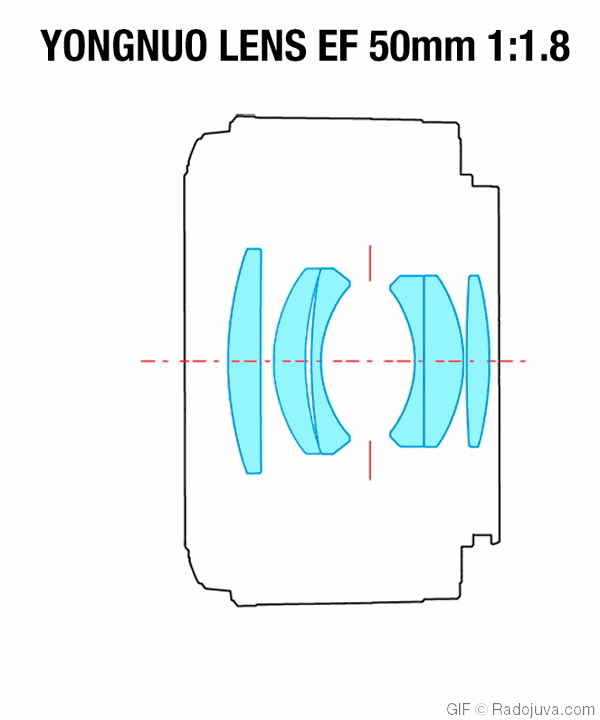
Optical schemes of lenses: YONGNUO LENS EF 50mm 1: 1.8, Yongnuo YN50mm F1.8N (from review), Canon Lens EF 50mm 1: 1.8, Canon Lens EF 50mm 1: 1.8 II, Canon Lens EF 50mm 1: 18 STM, Nikon 50mm 1: 1.8D AF Nikkor
Sample photos on Nikon D70
Pictures from Nikon D70. Photos are shown without processing, on-camera JPEG. You can see the bokeh of the lens.
You can download the source files at this link (56 JPEG files).
Sample photos on Nikon D90
Pictures from Nikon D90. The photos in the gallery are shown without processing, the conversion of the source RAW files by the original Nikon ViewNX-i utility without any additional adjustments.
You can download the source files at this link (70 RAW files).
Sample photos in processing
Several photos in processing can be viewed at 500px: 1, 2, etc.
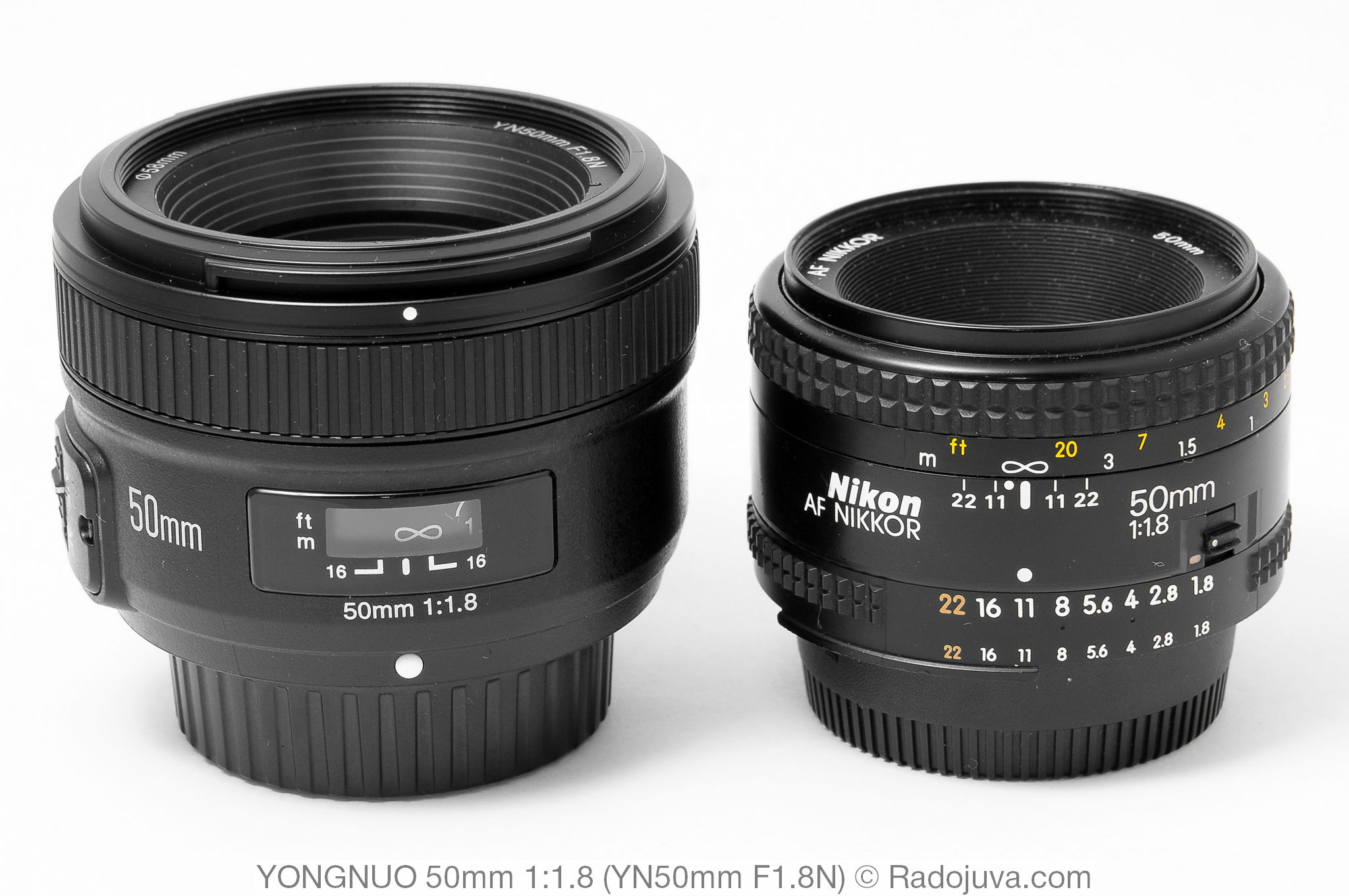
The sizes of the lenses are Yongnuo 50mm 1: 1.8 (YN50mm F1.8N) and Nikon AF Nikkor 50mm 1: 1.8 (MKII, NJ, NIKON JAPAN version)
Prices
Prices for Yongnuo 50mm 1: 1.8 lens (YN50mm F1.8N) at aliexpress.com can see and buy at this link. On aliexpress.com this lens is sold at the cheapest prices. In all other places, for example, in local stores of the former CIS countries, Yongnuo 50mm 1: 1.8 is much more expensive.
Comments on this post do not require registration. Anyone can leave a comment. Many different photographic equipment can be found on AliExpress.
My experience
A cheap fifty for Nikon non-motorized cameras is very good. Motorized camera owners could always afford to buy a pretty one Nikon 50 / 1.8D for only 90-110 dollars. But for owners of non-motorized cameras had to buy a more expensive Nikon 50 / 1.8G (170-200 dollars). With the advent of Yongnuo 50mm 1: 1.8, you can afford a brand new fifty dollars with an integrated focus motor for $ 80.
I relate to the YN50mm F1.8N quite warmly and am glad that amateurs have the opportunity to cheaply buy a high-aperture fifty. I'm also glad that the YN50mm F1.8N turned out to be better overall than Yongnuo Lens EF 50mm 1: 1.8. It’s only a pity that the Nikon version costs half the price of the Canon version.
Important: This lens is primarily intended for amateur photographers (not professionals or advanced amateurs!) who will be careful about their photo equipment and not use it in conditions with a heavy load (weddings, reports, extreme conditions, etc.). I saw with my own eyes how my colleague, during a lens change, dropped Nikon 50 / 1.8D from a meter height onto a concrete floor. The lens received only a tiny scratch on the body, but this did not affect its functionality. I don't think the Yongnuo 50mm 1: 1.8 will stand up to this test.
Of course, the stress resistance of Yongnuo 50mm 1: 1.8 is not comparable to the old manual lenses Nippon Kogaku Japan Nikkor-S Auto 1: 2 f = 5cm or Nikon Nikkor-SC Auto 1: 1.4 f = 50mm, or MS Helios-81H 2/50... However, for most tasks, I would have preferred the presence of autofocus in front of a sturdy, quality body. Users who are looking towards the YN50mm F1.8N are often strapped for funds and faced with a choice: 'This Chinese' or 'Japanese manual'? In personal messages I am very often asked this question. Usually I give the answer that for photography in general it is better to "Chinese", and for video shooting (where automatic focus is not so important) - any "Japanese manual".
If to summarize completely all my experience with the lens, here is my brief recommendation: YN50mm F1.8N can be safely bought for Nikon non-motorized cameras (exact list here) For cameras with built-in focus motor (exact list here) it is better to take the original Nikon 50 / 1.8D (does not matter, used or new).
All Nikon 50 / 1.8 Autofocus Lenses
- Nikon 50mm 1: 1.8 AF Nikkor (first version, MKI) - the lens was produced only in Japan from 1986 to 1990. It is easy to distinguish by a window with a focusing distance and a narrow plastic focus ring. There are two subversions that are no different:
- MKI first subversion. Weighing 210 grams. It is easy to distinguish by the screw under the inscription '1: 1.8'. From September 1986 to March 1987. Serial numbers start at 2
- MKI second version. Weighing 165 grams. It is easy to distinguish by the absence of a screw under the inscription '1: 1.8'. From 1987 to 1990. Serial numbers start at 3.
- Nikon 50mm 1: 1.8 AF Nikkor (second version, MKII, also known as the 'N', or the 'NEW' version) - the lens was produced in Japan and China. The MK II version was produced from 1990 to 2001. There are three subversions that are no different:
- Nikon 50mm 1: 1.8D AF Nikkor (third version, MKIIIbetter known as 'D'-version) - the lens is available from 2002 to this day. All lenses are made in China.
- Nikon AF-S Nikkor 50mm 1: 1.8G SWM Aspherical (fourth version, MKIVbetter known as '1.8 G'-version or '1.8 AF-S' version) - the lens has been produced since 2011, all lenses are made in China.
- Nikon AF-S Nikkor 50mm 1: 1.8G SWM Aspherical Special Edition (fifth version, MKVbetter known as version 'Special Edition' or 'SE' or version for the camera with a retro design of the case Nikon Df) - the lens has been available since the fall of 2013. All lenses are made in China.
- Nikon Nikkor Z 50mm 1: 1.8 S, from summer 2018, lens for mirrorless cameras with Nikon Z mount... Diagram of 12 elements in 9 groups, 2 ED, 2 ASP.
Details on the lineup of fifty dollars from Nikon can be found in my article 'All Nikon autofocus fifty dollars'.
I want to note that the MKI, MKII, MKII versions use the same 6/5 optical circuitry, similar to the YN50mm F1.8N.
Versions MKIV, MKV use the updated optical scheme 7/6.
Differences from Nikon 50 / 1.8G
The main differences between Yongnuo 50mm 1: 1.8 (YN50mm F1.8N) and Nikon AF-S Nikkor 50mm 1: 1.8G SWM Aspherical:
- YN50mm F1.8N is a newer lens introduced 5 years after the release Nikon 50 / 1.8G.
- YN50mm F1.8N is 18 grams heavier Nikon 50 / 1.8G. The YN50mm F1.8N does not come with an integrated hood.
- У Nikon 50 / 1.8G Yes rubber lens mount sealwhich makes the mount mounts dustproof and waterproof.
- Lenses use different focus motors. YN50mm F1.8N uses a conventional micro motor, Nikon 50 / 1.8G uses a Nikon SWM ultrasonic motor. The focusing speed is practically the same.
- Nikon 50 / 1.8G has the ability to constantly manually control the focusM / A'. For manual focusing, YN50mm F1.8N must be set to the 'MF' position.
- Different optical schemes. Nikon 50 / 1.8G uses a more modern optical scheme, including one aspherical element, which allows to achieve better image, especially on open diaphragms.
- Modern Nikon cameras can automatically correct some lens distortion Nikon 50 / 1.8G. With the YN50mm F1.8N, some image enhancement functions will not be available, since this lens is not in the memory of modern cameras.
- Cost of new Nikon 50 / 1.8G about 2-3 times the cost of the new YN50mm F1.8N.
Differences from Nikon 50 / 1.8D
The main differences between Yongnuo 50mm 1: 1.8 (YN50mm F1.8N) and Nikon 50mm 1: 1.8D AF Nikkor:
- YN50mm F1.8N is a newer lens introduced 14 years after the release Nikon 50 / 1.8D.
- Lenses use a completely different body design. Visually Nikon 50 / 1.8D much smaller YN50mm F1.8N.
- Nikon 50 / 1.8D about 50 grams lighter than the YN50mm F1.8N.
- The YN50mm F1.8N uses a built-in micro focus motor to focus. Nikon 50 / 1.8D It does not have a built-in focus motor and focuses due to the focus motor built into the camera. This is one of the main functional differences between the lenses.
- Unlike Nikon 50 / 1.8D, during focusing, the YN50mm F1.8N does not have a barrel extension.
- Modern Nikon cameras can automatically correct some lens distortion Nikon 50 / 1.8D. With the YN50mm F1.8N, some image enhancement functions will not be available, since this lens is not in the memory of modern cameras.
- Nikon 50 / 1.8D It has an aperture control ring that the YN50mm F1.8N does not have.
- New Nikon 50 / 1.8D It costs a bit more than the new YN50mm F1.8N.
To summarize, it turns out that the Yongnuo 50mm 1: 1.8 mixture Nikon 50 / 1.8D и Nikon 50 / 1.8G. From Nikon 50 / 1.8G he took control and body design, and from Nikon 50 / 1.8D took the optical circuit. Functionally, Yongnuo 50mm 1: 1.8 is still closer to Nikon 50 / 1.8G.
Video review
A brief video review can be viewed on my Youtube channeleither here:
Results
Yongnuo 50mm 1:1.8 (YN50mm F1.8N) – cheap analog Nikon 50 / 1.8G (only about 100 dollars from this link) is optically close to Nikon 50 / 1.8D. No matter how strange it sounds, the YN50mm F1.8N is a perfectly suitable lens. Given the price / performance ratio, I recommend it to all amateur photographers who want to join the world of fast auto focus lenses.
UPDATE: review appeared Yongnuo 35mm 1: 2 (model YN35mm F2N).
Material prepared Arkady Shapoval. Training/Consultations | Youtube | Facebook | Instagram | Twitter | Telegram

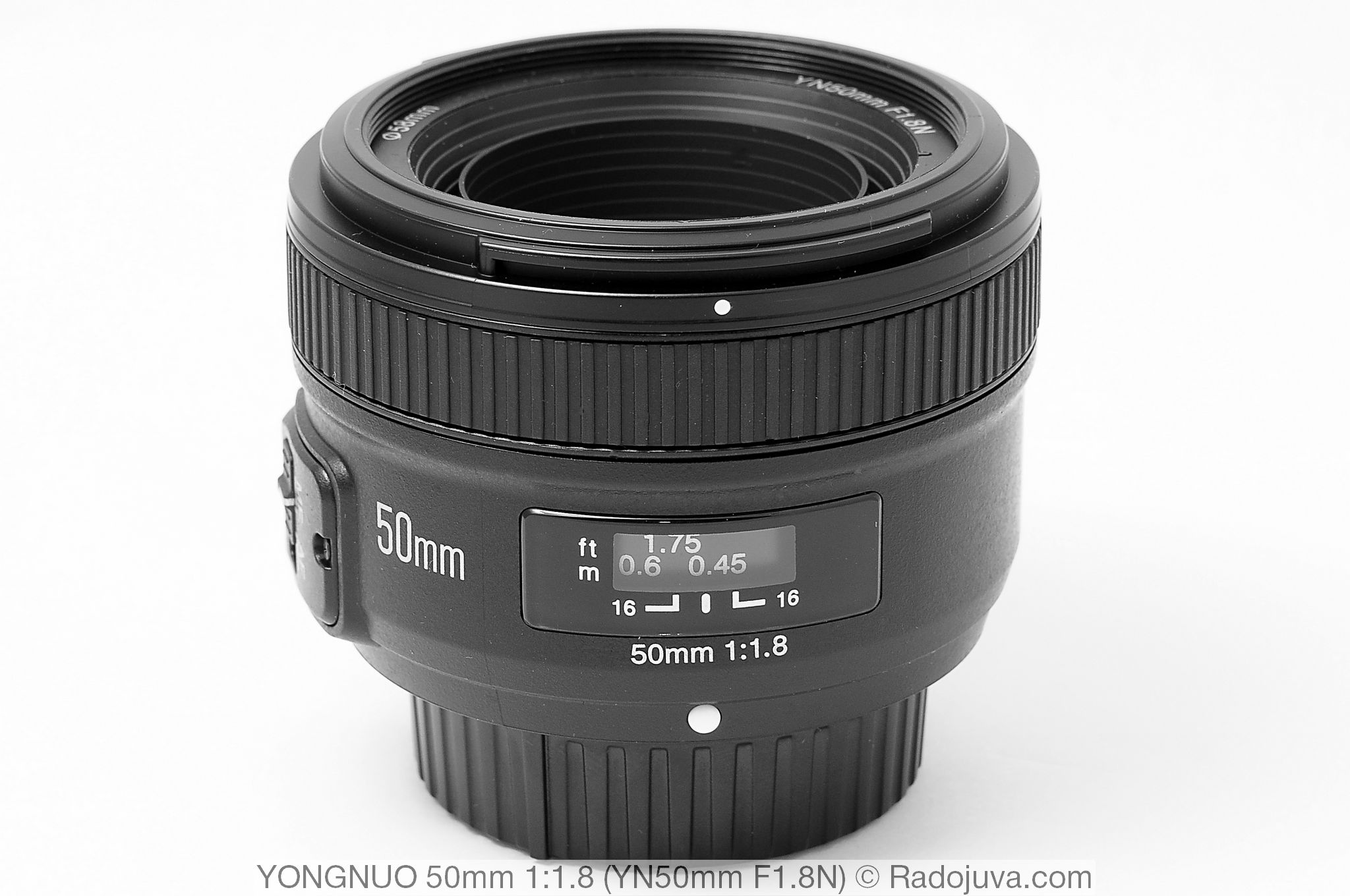
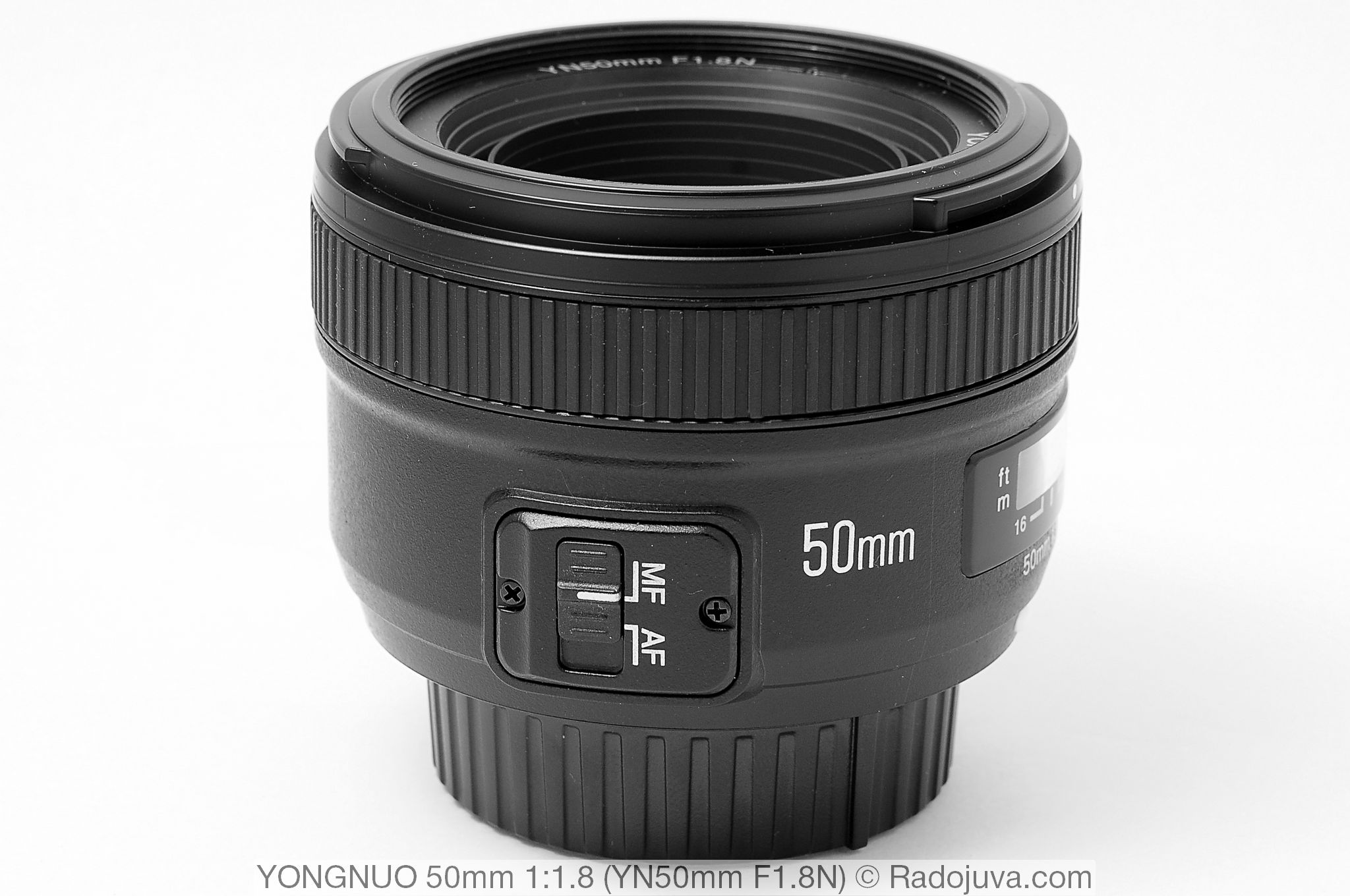
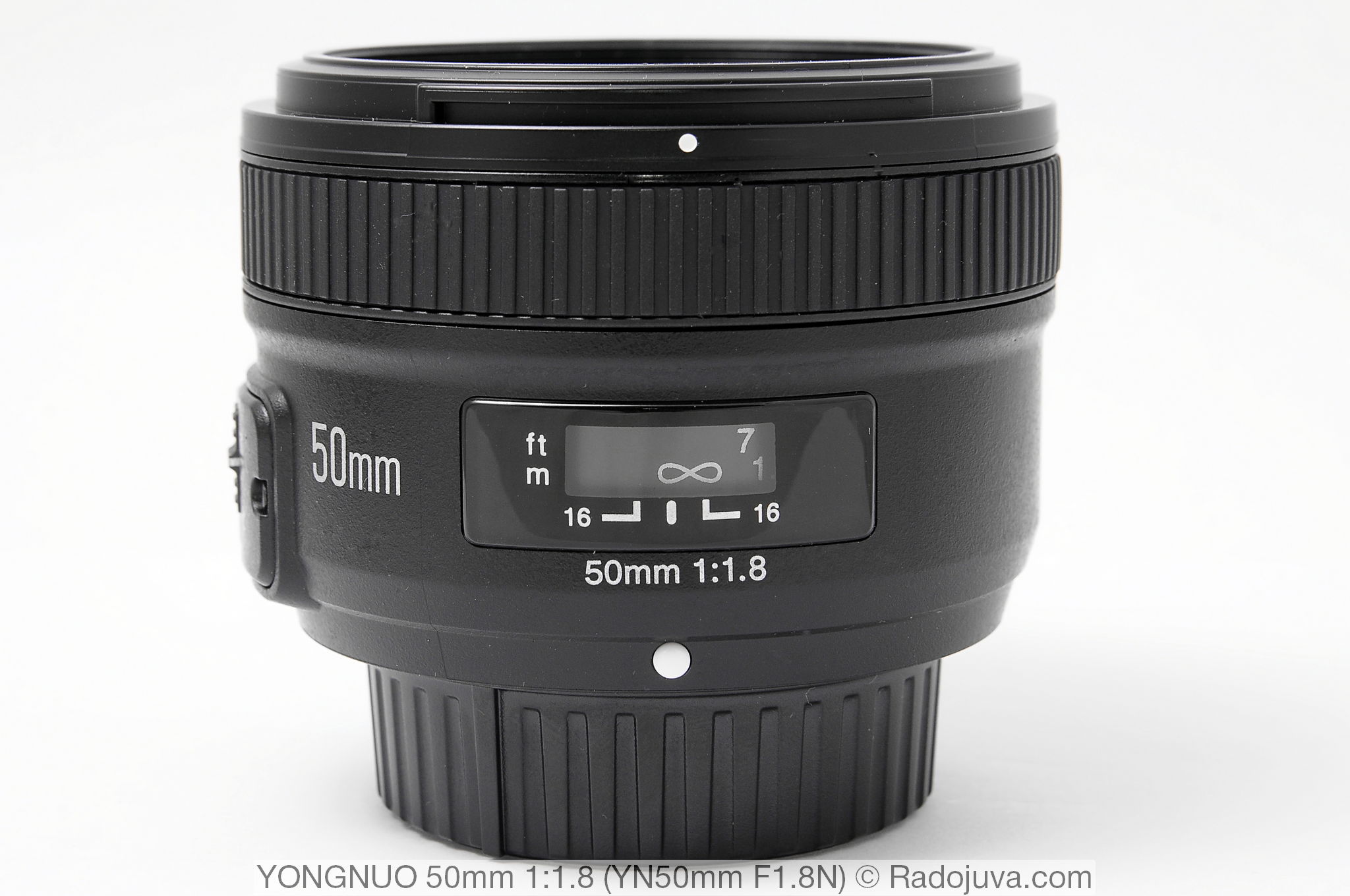
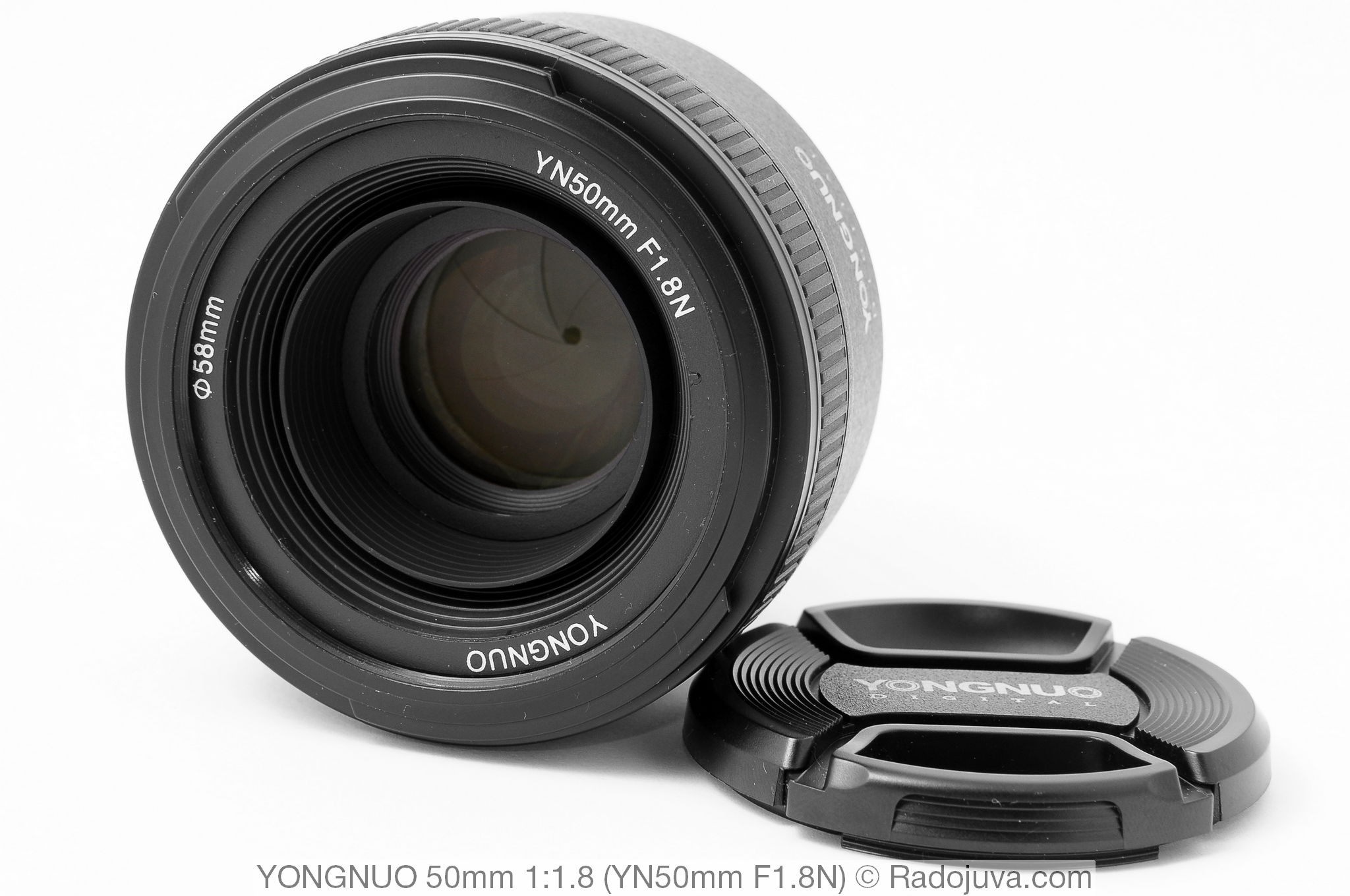
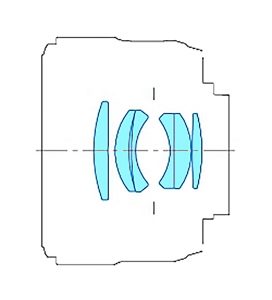
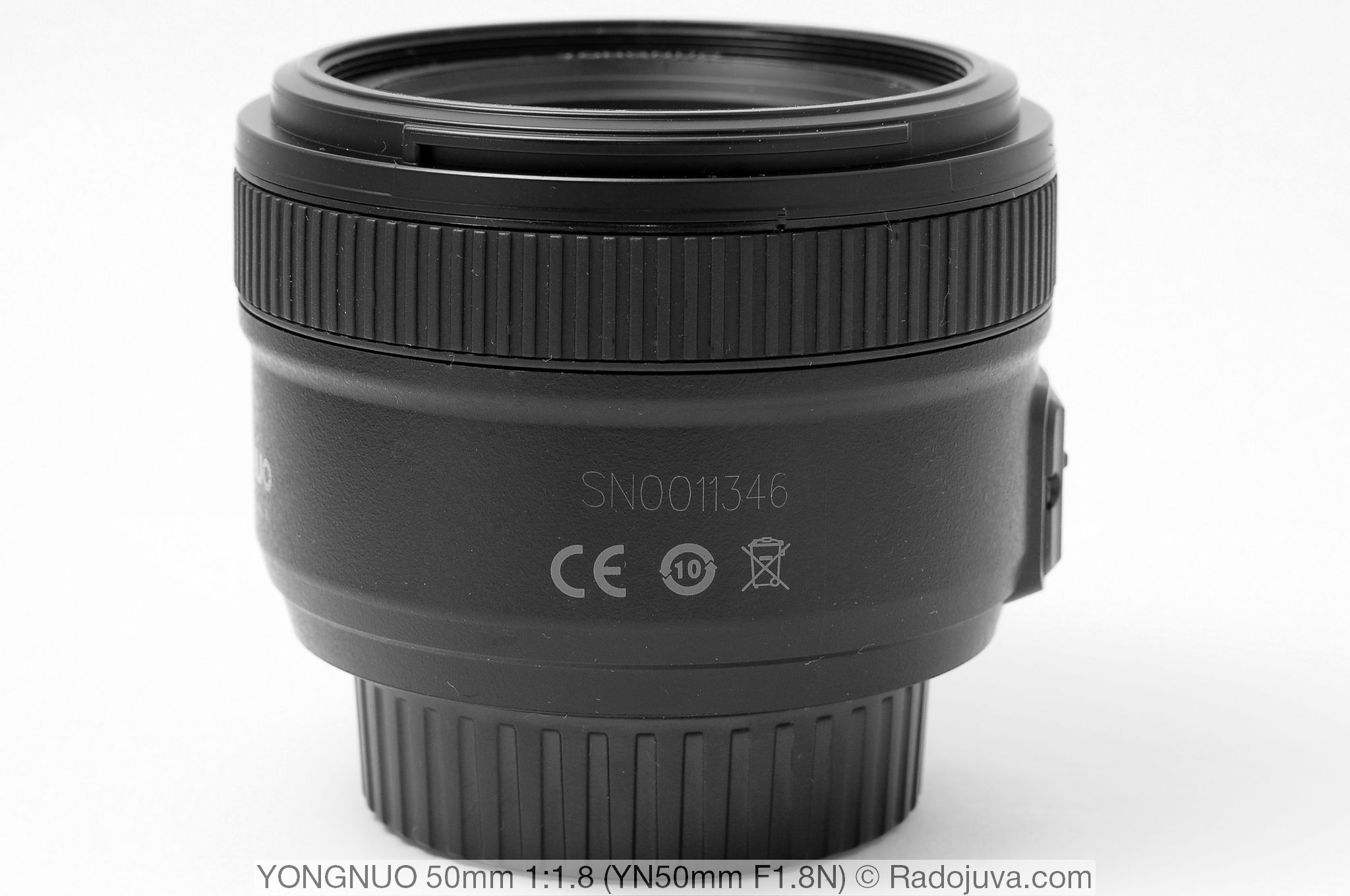
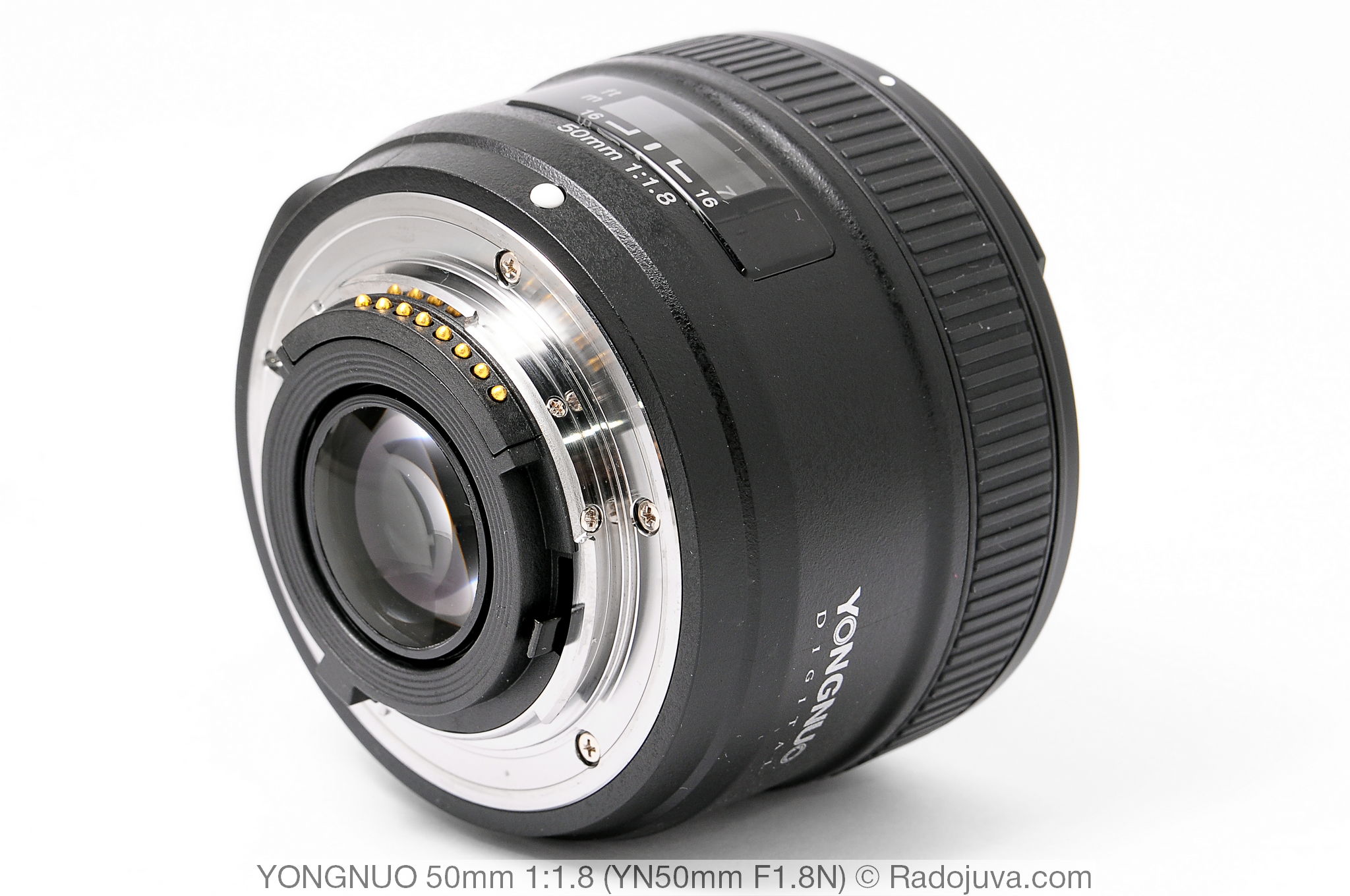
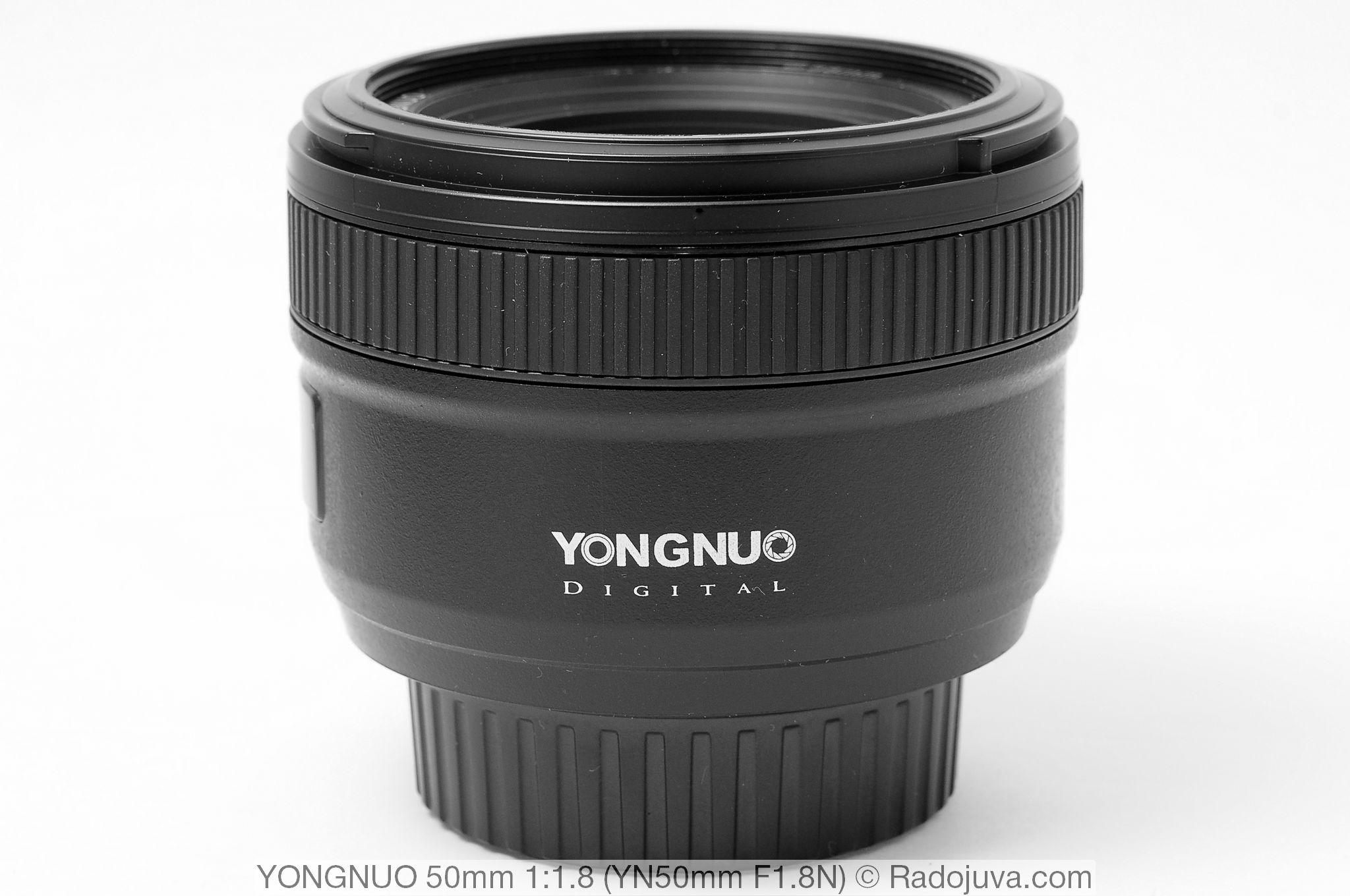











































































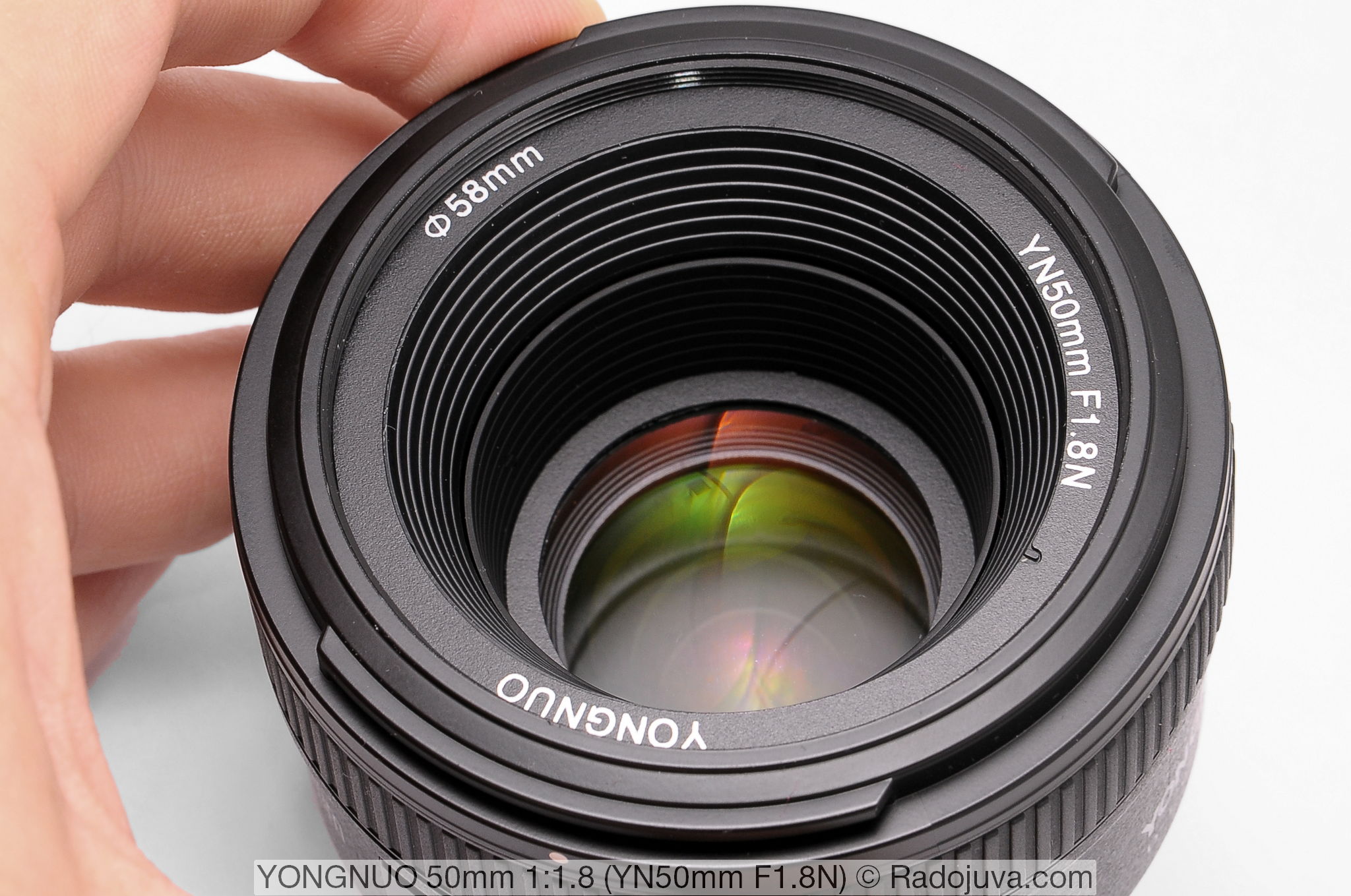
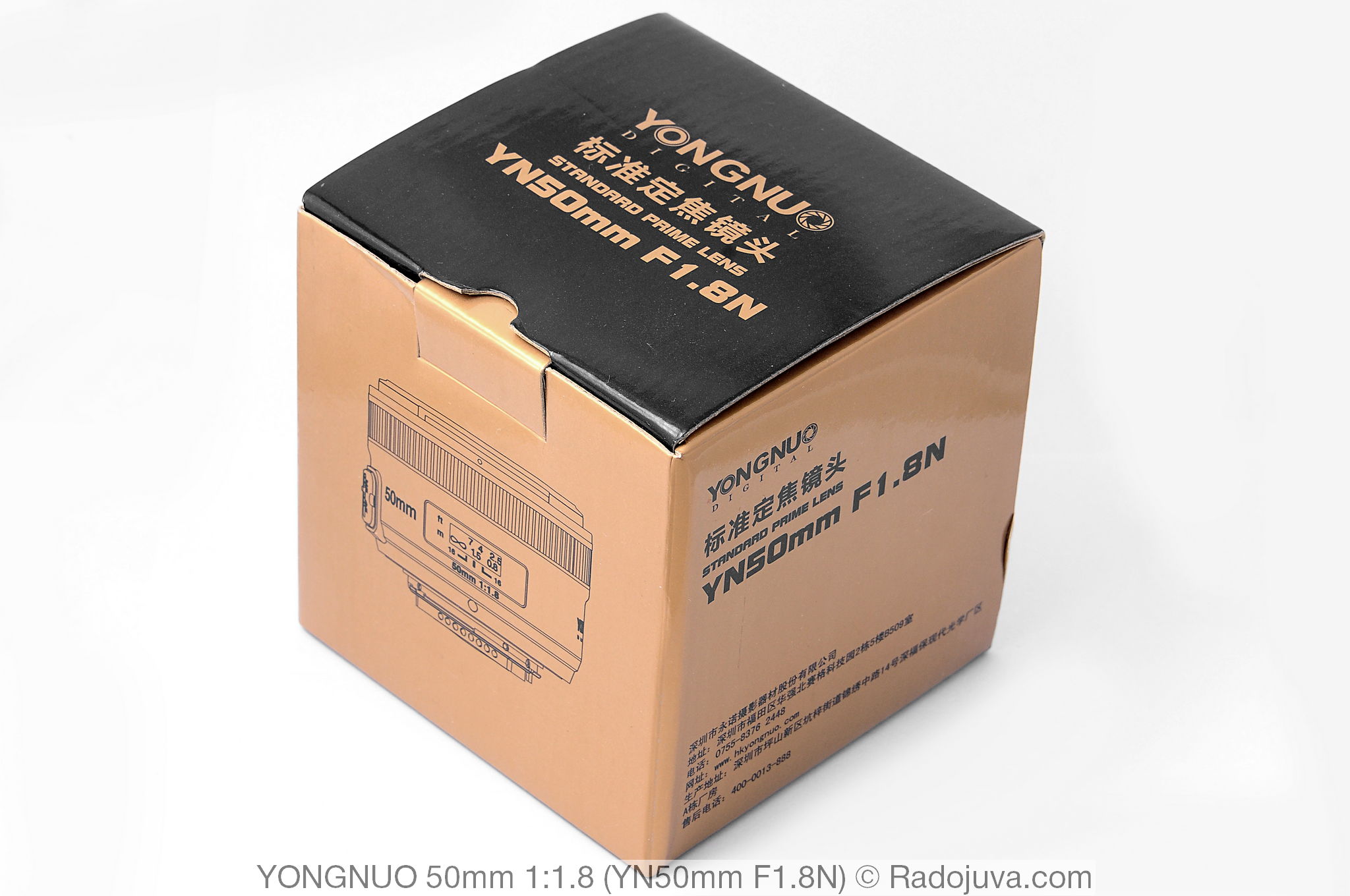
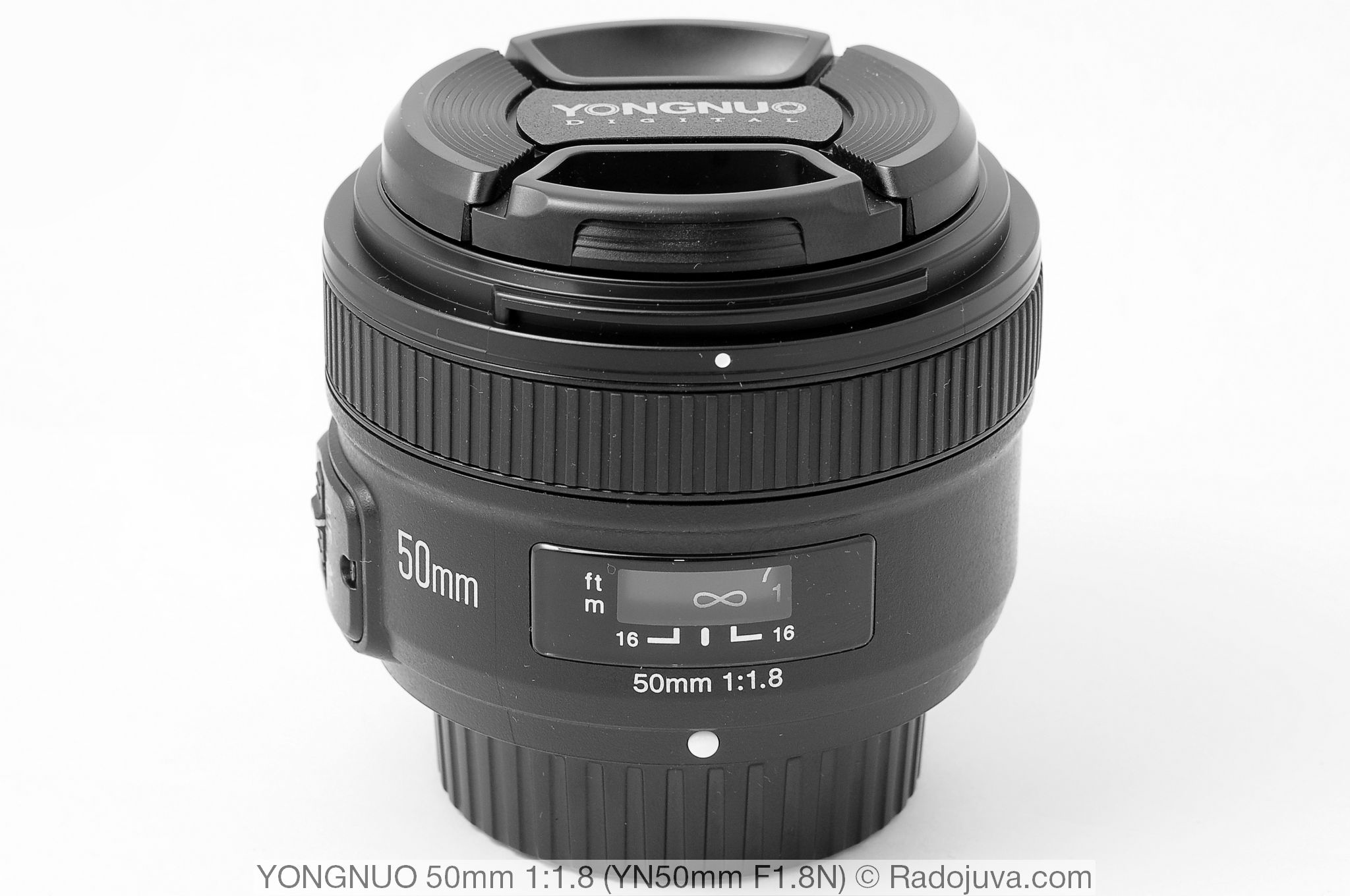

But was it worth taking this lens if there is a Helios-81N with a dandelion?
This lens is, first of all, interesting for its autofocus, and Helios-81H - for its picture. Therefore, there is a choice between convenience and a picture. Everyone will prefer their own.
And then the pictures do they differ by how much?
It is difficult to describe a picture in numerical terms. Helios, in general terms, has a more interesting picture.
I purchased this lens, it turned out that my copy suffers from back focus. Now I’m thinking about how to fix it, because I don’t want to shoot all the time in Live View. The D5300 does not allow corrections.
Maybe it can be somehow relatively easy to adjust the back focus on this lens?
I am sure that no one will tell. The lens is new, little studied. Perhaps in the SC they will adjust the camera for it, call, ask.
Need help! I have a nikon D5200 (crop), I bought yongnuo 50mm 1.8 and compared the picture on the whale DX on the same FR 50mm, and they turned out to be the same in the picture. Maybe I misunderstand something? (After all, DX lenses are sharpened for crop and give a picture similar to FX lenses in full frame on the same FR. Then a 50mm FX lens should give an 80mm FR on the crop similar to a full frame. Correct and enlighten) thanks.
All lenses write focal lengths for a “full” frame. The size of the picture should be the same for 50mm from different glasses, even from the medium format. Look at the soap dishes there are generally funny numbers, and the picture is like from 28-100
It's all about the viewing angle. The viewing angle of 50mm on the crop will be the same as 75mm on the full frame. For this, they resort to such a concept as EGF. That is, 50mm on a full frame is much wider than 50mm on a crop, due to the smaller matrix. Although these are the same 50mm. Now, if you had the opportunity to put fifty dollars on a full frame, then then you would immediately feel the difference
I wonder why the fixes 85mm and on the FF are portrait lenses (75mm is almost the same), and the "fifty on the crop" - well, nothing.
the transfer of perspective on the FF and the crop is the same. Therefore, 85 will be a portrait for anything, and 50 licenses conditionally for crop.
the transfer of perspective is to blame
Is the prospect in the sense of a face flatter and the background closer, which is typical for televisions? For the viewing angle (or distance to the object) is about the same.
Yes, viewing angles and perspective are different. how the perspective is changing can be seen here https://radojuva.com/2016/04/aps-c-bokeh-again/
The perspective on the crop will be different, since for a similar filling of the frame you will have to move proportionally further, but distortions, for example, the faces in the portrait will be exactly like 75 for FF. That's just the depth of field will be greater due to the greater distance from the subject.
In my case, this lens in live view mode focuses normally, when in normal mode - the focus is always a little short of fully. What could be causing this? Even on a sunny day.
this is back focus
This is the front focus. Carry in service.
in yongnuo service is fixed? In my opinion, no. My camera does not adjust autofocus. The d7200, in my opinion, has such an opportunity. But I don’t know if yongnuo will work or not.
Unsubscribe, who had experience with such things? The lens is new. Maybe I got a marriage? Or is it like that for everyone?
on what diaphragm does this byak appear?
if 2.8 hits the target, do not bother with selling it :)
and on a more open shoot using LiveView and that's it
Does aperture matter? It will only increase the depth of field. I'll check it now.
On any aperture backing, only the depth of field changes.
Maybe the truth is, to sell it and that’s all?
Well, yes, if the back focus is not so strong that there is enough depth of field so that it is not noticeable. for example, I have a Nikon 50mm F / 1.8G if it misses on the D5100, then I don’t notice it
in addition, in LiveView, the camera can focus on the eyes, this is an additional plus for shooting portraits with open apertures
Maybe it would not have been noticeable if it had not been compared in Liveview. But just psychologically it presses)))
By the way, I tried it on the printout to evaluate the font-back focus - it turned out to be Back ..
Hello! Could you please tell me if this lens will focus automatically on the Nikon D3100? Or only in manual mode? Thanks.)
Yes, of course it will :)
In the link to the store where the lens was purchased, YN50mm f1.8 is written on the photos of the lens itself, in other stores it is YN50mm f1.8N, is this a fundamental difference? If so, what is the difference?
In the section All lenses of Yangnou, I have already indicated that Yongnuo 50mm 1: 1.8 (YN50mm F1.8, for Nikon cameras, samelike YN50mm F1.8N), there are no fundamental differences. The first games were without the letter 'N'.
Those. about the color of the lenses in f1.8 and f1.8N can not bother?
Yes, you can not bother.
Who has experienced this lens with the nikon d3100? Are there any software conflicts, glitches at work, and the like?
It works for me on d3100 - everything is fine
Will it work on 3300?
Yes, it will work.
Hello! The whale on the baby D40 is out of order. I’m looking for a replacement for this fifty percent or YN35mm F2N. What is your advice? I am an amateur, I rent mostly family. thanks!
better buy a whale again, he's doing a good job on the D40
Will the 35mm yaga work on d40?
Yes, nothing bothers her
Hello everyone! The whale on the baby D40 is out of order. I’m eyeing for a replacement for this fifty percent or YN35mm F2N. What is your advice? I am an amateur, I rent mostly family. Thanks to all!
As a single lens, fifty dollars is narrower, look better at 35mm, but not Yaga, but native, Nikonovsky.
There is no conflict of this lens with Nikon 5200? I'm just starting to study photos, so I don’t want to fork out for too expensive) I think this is the first time just right)
I ordered a 35mm version of this lens from China. A little soapy at an open aperture, plus a little back focus. I was surprised by the protective films - after removing from the lens, they did not stick to anything. The lenses looked clean, but as soon as they were rubbed with a cleaning pencil, a greasy mark appeared that the pencil could not cope with. I had to tinker, but I cleaned the lenses. Subjectively, the quality has become better - the sharpness has not been greatly improved, but the freigging has noticeably decreased. Can anyone check on their own - is there the same oily film on the lenses? Just be careful with alcohols - enlightenment reacts to them.
Focusing is pretty quiet, expecting the worst. But even with good lighting, it clings poorly to a plain background. I didn’t notice this on my native lenses.
ps Nikon D3200 camera
I was surprised by the protective films - after removal from the lens, they did not stick to anything
—
as far as I remember, it was always like that
Was there an oil film on the lenses?)
I'm not talking about lenses - cameras on phones are glued like that, as well as electronic watches
Honestly, I don’t understand why to do this with the lens :)
“Always” - it means that after peeling it off, the film no longer sticks
Good afternoon.
Your review says that the lens has a built-in focusing motor, that it does not depend on its presence in the carcass. Can this lens work properly with Nicon D3000?
of course
Arkady, thank you for the comments and reviews.
So I want to take the Yongnuo 50mm 1: 1.8 lens. According to your reviews, acquired Fujifilm FinePix S3 Pro. Very satisfied. I use lenses Jupiter 37MS and Nikon 18-105.
Tell me if he, Yongnuo 50mm 1: 1.8, will work with Fujifilm FinePix S3 Pro. Display distance and autofocus.
Thank you very much!
Yes, c3 pro will work with Yaga. Will transmit focus distance and focus automatically.
Arkady, the lens for him is Nikon's HB-47. For 35mm - it's the same, the bodies are the same.
This lens hood fits with a bang!
The lens is good for exploring fast lenses and as a replacement for the standard 18-55. But he does not know how to shoot in motion, sharpness is perfectly observed at F from 3,3 and higher, below you need a tripod and without movements.
Arkady, good afternoon.
I would like to take a fast portrait. Nikon d5100.
I jumble between YONGNUO 50mm 1: 1.8 and Nikon Nikkor-S Auto 1: 1.4 f = 50mm. The price is about the same. Which would you recommend?
Now AF-S nikkor 18-140mm 1: 3.5-5.6G
I strongly do not recommend contacting the manual, it’s better to take this Yaga, there will be much more sense :)
Arkady, thanks for the tip and a separate one for efficiency =)
I will take YONGNUO =)))
On ebay, these lenses can be found cheaper.
A review of the 35mm yagi lens under nikon is not expected? I tried 50 - as a portrait camera on a crop is good, but shooting indoors - nothing interferes :) I think to buy 35, but the original is a toad crushes, I do not use it so often.
I heard what is in sight.
PS Judging by the available pictures, YN 35/2 is very good)
Coming soon :)
Thanks for the review! The lens is bought and actively used. There is no way to compare with the original, maybe Nikon has such a problem, but the sharpness in the photo is often not enough. Even on f4. Eyes on portrait photos are especially worrying. Arkady, downloaded your ravki. There is also turbidity in front of our eyes, but everything is clear in the processed files! What tools do you rule?
Nothing was corrected in the review.
Most likely, the sharpness "increased" due to the reduction in the size of the pictures.
Try to choose one focus point, depending on the composition, so that it falls between the eyes of the model
Recently acquired this lens in China. Overall impressions are very positive. But there is a feeling of constant overexposure, which has to be adjusted during processing. Has anyone encountered a similar problem?
There is such a thing, namely in the aperture priority mode. The first tests tried to understand why the exposure was overestimated, there was a reserve of exposure. From this, I did not immediately understand that the lens had back focus, even at times it seems that at different apertures there are different misses. In general, I did not get the copy (((Although I really wanted to try the fast fix. I screwed the whale AF-P 18-55 VR - as if I got into my native element, the focus clings brutally, noiselessly, and most importantly, the hits are amazing.
I got this miracle today. First impressions: The autofocus is fast (I expected the worst). Fast, but not stable (3-4 misses for 10-15 frames), i.e. about 30% of the shots in the trash can! Today is a bright, sunny day. And, when shooting outdoors, you have to close the aperture ... because the shutter speed is stupid! I also have to change the settings in the camera (since I didn't like the picture of the whale 18-55 at all - I turned up the contrast, sharpness, detail and saturation all the way) ... now you need to throw everything down to zero. At first it seemed that the picture was soapy at the open aperture and there was back focus ... but everything turned out to be simpler: slight backlighting and autofocus error ... Overall, I am rather satisfied with the purchase ... especially for that kind of money ... but you definitely need to get used to the lens.
And more ... I bought it in a company store. Yes, we have an official representative of this company in our city. I asked him for 85 / 1,8 for Nikon ... he promised to find out, and 85 / 1,8 for Canon had already been disassembled from us (the price is $ 200, and they say it is very heavy! It seems even like a completely metal case) ... said that one of these days the arrival of "shirikov" is expected ...
The 85 has a metal front.
After the whale lens, you should get used to any lens :)
Well, yes ...))) Either the autofocus misses, or it focuses perfectly ... and much better than manually using live view! Either I'm so blind, or one of two things ...))) Well, okay, I'll take pictures of flowers ... But I really want to try Chinese 85 / 1,8!)))
Under Nikon, only 100/2 have been released so far.
I know ... It's just that Canon's 85s were brought to us, in my opinion, in May ... it's time to put up 85s for Nikon in time ... I asked Oleg to find out if soon? He promised to clarify at the next communication session ...
Arkady, I read your blog with enthusiasm, thank you very much)
Please clarify the question. In Russian online stores (mvideo and others), the description of the “Yongnuo YN50mm F1.8 Nikon” lens contains the characteristics and photograph of the lens version for Canon (filter diameter 52mm, plastic mount, etc.).
The marking of this lens is YONGNUO LENS EF 50mm 1: 1.8
Is this a mistake, or has Yongnuo released a simplified version of the lens for Nikon for distribution in the Russian Federation?
No, it is in online stores that they simplify their lives and trash the description, stupidly licking at the Chinese and not including the brains. EF is for Canon.
This is grief for store content managers.
This is about the front focus (on D5100) ... And the question: has anyone tried to use macro rings with it (not lenses!) ???
I tried. Autofocus Meike. I will say right away - even Arsat 80-200 is better with rings. For, the larger the focal point for macro, the better, the distance from the front lens will be greater) Secondly, autofocus in macro is not always good, especially when the depth of field is in the region of one millimeter. Thirdly, the only plus of this lens is lost - it is aperture, in macro, anyway, you will have to clamp the aperture to obtain the required depth of field. Well, and most importantly - low contrast, crazy chromatic aberrations negate attempts to get at least some detail of small objects.
Hello. I ordered this lens from China (option without a case, without a hood). Upon receipt, I found that the serial number on the lens was completely absent, as if it had not even been applied. How can this be? Counterfeit?
Of the negative impressions, it’s only that autofocus on the d5200 misses in at least 50 percent of cases, and it’s as if backfocus is present.
I don’t know about the number, it can be on the box.
The serial was found on the bayonet (very small). Thank you for your reply and for the detailed review!